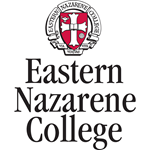Below is a summary of the abstract you submitted. Presenting author(s) is shown in bold.
If any changes need to be made, you can modify the abstract or change the authors.
You can also download a .docx version of this abstract.
If there are any problems, please email Dan at dar78@pitt.edu and he'll take care of them!
This abstract was last modified on March 20, 2024 at 3:04 p.m..

In the realm of microbiology, the newly discovered of bacteriophages Judebell and RicoCaldo provides valuable insights into the intricate dynamics of microbial ecosystems. These phages, isolated from soil samples in Quincy, MA, USA, offer a glimpse into the diverse world of bacteriophages and their interactions with their bacterial host, Microbacterium foliorum. Transmission electron microscopy revealed the classification of Judebell as siphoviridae and RicoCaldo as podoviridae, characterized by icosahedral heads containing double-stranded DNA genomes. Judebell has a long non-contractile tail, whereas RicoCaldo has a very short non-contractile tail. Both phages are lytic against their bacterial hosts, underscored by the absence of genes associated with lysogeny such as integrase or repressor functions. Upon isolation, the phages underwent purification through serial dilution and amplification via webbed plate formation, resulting in high-titer phage lysates. Subsequent analysis of their genomes involved restriction enzyme digestion, gel electrophoresis, and auto-annotation using various bioinformatics tools such as DNA Master, GeneMark, and Glimmer, followed by manual annotation. Neither genome has tRNA genes. Judebell's genome belongs to cluster EG, exhibits a length of 61,786 base pairs, and consists of 103 genes with four auto-annotated genes removed. In contrast, RicoCaldo is classified within cluster EK2, possesses a genome size of 54,524 base pairs, and encodes for 55 genes, with one auto-annotated gene removed. About half of the genomes in EK2 call the protein Major Capsid Protein, but RicoCaldo does not. In summary, the characterization of Judebell and RicoCaldo sheds light on the fascinating interplay between bacteriophages and their bacterial hosts. While their clinical relevance may be limited, their study enriches our understanding of microbial communities and the role of bacteriophages within them, opening avenues for further exploration in microbial ecology and biotechnology.
